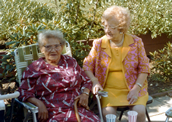The STRELETSKAJA family came from Radin. It is possible the ZEMSER family had roots in Radin as well.
Radin
This entry refers to a town formerly in the Polish-Lithuanian Commonwealth , but now in Belarus (some very near the border with Lithuania ). Poland proper has several Radun's, so it's important not to confuse them with this place.
Radin [(ow Radun, ..., in Belarus), a small government-owned town on the Radunka River, Lida powiat, in the 4th political district, center of a gmina and a rural district; it is an estate belonging to the treasury, 30 km. northwest of Lida, 37 km. from Wasiliszki, and 82 km. from Wilno, on a side road which in the 16th century was the shortest highway between Wilno and Kraków.
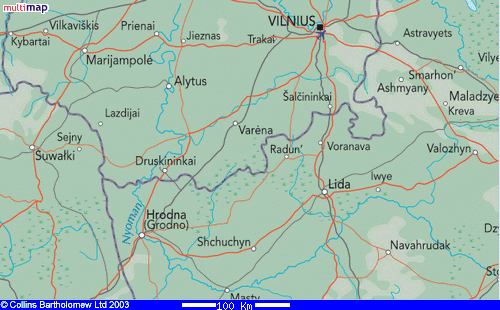
In the year 1881 there were 1,526 inhabitants (757 male and 769 female); in the year 1866 there were 91 houses and 869 inhabitants (361 Catholics and 508 Jews); it has a wooden Catholic church and chapel, a synagogue, gmina administrative office, and a public school, which in the year 1885-6 was attended by 56 boys and 2 girls. It is the property of the treasury, which gave the lands b ack to the peasants for purchase. About 2 km. from the town, on a vast plain near the village of Horodyszcze , is a large trench, and even though the inhabitants call it the "Swedish" trench, its shape and the name of the adjoining the village shows that it was a fortified citadel of long ago. According to Balinski (Star. Polska, III:259), Radun was called Radomi by 16th century travelers and writers.
This small town was once a royal estate, from which the income went to pay for the king's court and table. According to a 1538 inspection, it had 7 streets there, in addition to the market square, and 210 houses of Christians - Jews were forbidden to settle there. It had 35 saloons for selling beer, 7 for mead and one only for liquor. Later Radun became the site of a starostwo not affiliated with a gród, and in 1770 that office included the town with appurtenances. In the year 1766 Józef Tyszkiewicz, the castellan of Mscislaw [now Mstsislav, ..., in Belarus ] bought it, and on it he paid a kwarta of 2,616 z1oty's, 5 groszy, and a hyberna of 2,690 Polish z1oty's. At the Sejm of 1773-75 the Commonwealth government addressed recurring disputes over the borders of this starostwo by passing a separate law designating six officials as ad hoc commissioners to settle the matter once and for all.
In the Metryka Litewska the series of Radun starosta's begins toward the end of the 15th century with Janusz Kostewicz (1498-1527), followed by: Jan Hlebowicz (1527), Szymko M ac kiewicz (1532-1541), Stanislaw Kiezgajlo (1546-1549), Augustyn Fursowicz (1551), Jurij Wolczkowicz (1556), Jan Hercyk (1569), and Mikolaj Talwosz (1581).
The Catholic parish church of Our Lady of the Rosary dates from 1838, transferred from the village of Kolesniki (now Kalesninkai, Lithuania), due to the closing of the Carmelite monastery there. Previously there had existed a church from the year 1752, which burned down; rebuilt in 1801, it suffered the same fate again. There is a small chapel in the cemetery. The Catholic parish, of the Radun deanery, has 7,522 souls. At one time there was a branch of the church in the village of Dubicze . The Radun deanery consists of 11 parishes: Radun, Ejszyszki [now Eisiskis , Lithuania ], Wasiliszki [now Vasiliski , Belarus ], N ac za [N ac ], Bieniakonie [Benyakoni], Zablocie [Zabal ac ' ], Wawiorka, Iszczolna, Woronów [Voranawa], Ossów and Soleczniki [now Salcinikai , Lithuania ], for a total of 58,768 souls.
In this parish the terrain is level and treeless, overgrown in some pl ac es with bushes and covered with marshes. The soil is sandy, with a lot of gravel. It is watered by the following rivers: Dzitwa, Pielasa, Radunka, N ac zka, Sopunka, Jodub. The rural district includes the town of Radun and the villages of Juciuny, Str ac zuny, Horodyszcze, Jatowty, Popiszki, Skladance, Wojkunce, and the nobles' farm settlement of Poradun, for a total as of the year 1864, ac cording to the treasury rewizja of peasants, of 565 serfs, 3 men of jednodworzec status, and 32 free men. The gmina of Radun belongs to the 3rd district chamber of peasant affairs in the town of Ejszyszki as well as to the 3rd conscription center for the same pl ac e in Lida district, and consists of four rural districts: Radun, Mozejki, Kiwance, and Pielasa, including 67 villages with 536 houses, inhabited by 6,969 peasants. According to the 1864 census, there were in the gmina 1,740 serfs, ac cording to the treasury rewizja of peasants 346 enfranchised farmers, 85 of jednodworzec status, 56 Jewish farmers, and 32 free men, for a total of 2,259 souls.
Source: Slownik Geograficzny Królestwa Polskiego - Warsaw [1888, vol. 9, p. 450-451]
Translated by Barbara Proko, Boulder, CO and edited by Fred Hoffman. From the
PGSA Summer 1998 Bulletin."
Radin was in the Vilna Gubernia.
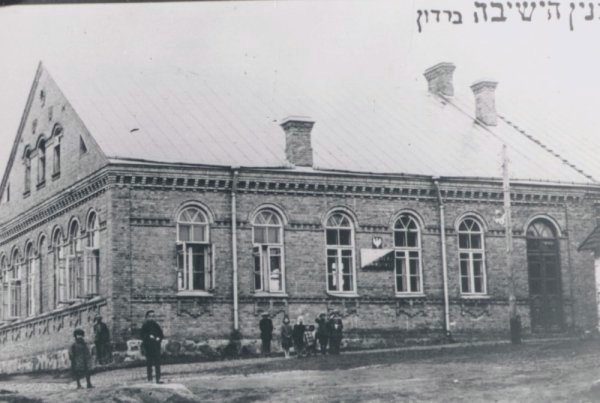
Synagogue in Radin circa 1920
*******************************************************
The Yeshiva Chofetz Chaim Of Radin
Rabbi Yisroel Mayer Kagan (commonly known as “The Chofetz Chaim”) founded a Yeshiva. Until his passing in 1933, Rabbi Kagan was recognized worldwide as the leader of world Jewry. He spread his message of moral te ac hings through proclamations, lectures and through the publishing of his twenty-one books on the laws of charity, kindness, and careful speech (refraining from gossip etc.). The world recognized that Rabbi Kagan exemplified the verse in Psalms: 13-14 Who is a man who desires life …. Guard your tongue from evil and your lips from speaking deceit. The Rabbi lived his own life in the manner that he set forth in his works for all and the public started calling the holy Rabbi by the name of his first book “Chofetz Chaim” (literally translated " He who wants life " as careful speech will bring one to a long and better life). This was the first work to organize and clarify the laws regarding impermissible speech, gossip and slander.
Radin has had no Jewish presence in many years, but local elderly residents in Radin still speak fondly of the holy Jewish Rabbi that lived in their town. Statements such as “He was not only the holy man for the Jewish residents but was holy to us all” are common. Others remember their parents would request that the Jewish rabbi walk on their fields so that the land would be blessed and more fruitful.
On September 16th 1933 the New York Times carried the story of his passing and called him “a figure of almost legendary importance for almost a half a century”. The article states, “ Despite his fame as the uncrowned spiritual king of Israel the Chofetz Chaim was a modest and humble man”. Perhaps most telling are the final words of that column, “Despite his great distinction the Chofetz Chaim lived in poverty all his life”.
As the Chofetz Chaim rose to lead European Jewry the Yeshiva grew in stature and in numbers. The Chofetz Chaim raised an enormous sum of money to build a beautiful structure for the Yeshiva. This was the largest building in the town and encompassed a large study hall for several hundred students, offices for administration, and dormitory f ac ilities for students who did not have local lodging.
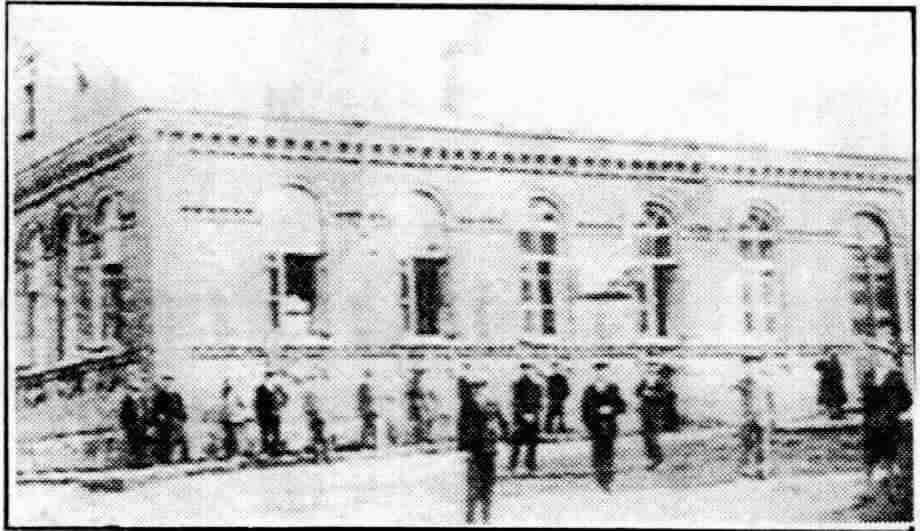
The Yeshiva in 1928
The Chofetz Chaim felt that a Yeshiva has responsibilities to the community to help and assist wherever possible.
The Yeshiva created and ran the following:
1- A Free Loan Fund (loans without interest) for students or other members of the community in need.
2- The Kolel Kodoshim: a study program for young married adults
3- A charity fund for the poor.
4- A burial society for the dead and a fund to help the sick.
5- As many of the students needed help to start out in married life, the yeshiva provided a marriage assistance fund.
6- A large fund was set up to print and distribute the many works and proclamations of the Chofetz Chaim. (This included the monumental "Mishna Brurah": a six volume compilation of all daily laws in Jewish life.)
7- Many other communal help organizations were established ac ross pre-war Europe that were guided by the Chofetz Chaim and the Radin Yeshiva.
In the 1920s, Rabbi Mendel Zaks married the daughter of the Chofetz Chaim and as his son-in-law, he joined the Chofetz Chaim as leader of the yeshiva and in all other communal affairs. Rabbi Zaks was immediately recognized for his te ac hing and leadership abilities. His vast knowledge of Talmudic Law, coupled with a photographic memory and unending hours spent with his students attr ac ted even more students to the Radin Yeshiva at that time.
In 1925 the yeshiva sent emissaries to the United States to raise money for the operation of the Yeshiva and its many charitable programs. The Yeshiva Chofetz Chaim of Radin was first incorporated as a religious corporation in the United States in 1925 thus establishing the first link from Radin to the United States .
By the time of his passing in 1933 the Chofetz Chaim had risen to be the undisputed leader of world Jewry. The Chofetz Chaim worked tirelessly for his community and world Jewry creating Yeshivas, Day Schools and organizations to help protect the Jewish way of life. It was the Chofetz Chaim whose influence and leadership created the Agudath Israel organization with the intention to unite all f ac ets of orthodox Jewry under one banner.
Rabbi Mendel Zaks stood at the helm of the Yeshiva continuing the work of his father in law, and the Yeshiva attr ac ted the best and brightest students from far and wide. In the 1930s the yeshiva had over Four Hundred Students learning and studying in Radin. Although the great leader had passed away, it was now Rabbi Mendel Zaks who was producing the scholars to lead the next generation. A new Building Campaign was started to f ac ilitate a major expansion but as history has shown this was not to be. The construction was halted as the winds of war swept over the community and those who did not escape were brutally murdered by the bloodthirsty Nazis in the streets of Radin.
The students of Radin were found leading and establishing many of the yeshivas and educational f ac ilities around the world: Rabbi Elchonon Wasserman, who even as a student in Radin was dean at the helm of the Yeshiva in Baranovitz, Rabbi Issur Zalman Meltzer who was dean of the Yeshiva in Kletzk, Rabbi Avrohom Kalmanowitz of the Mir Yeshiva, Rabbi Kahanaman of the Ponovez Yeshiva in Israel, Dr. Belkin who was the dean of the Yeshiva Isa ac Elchonon /Yeshiva University in New York, Rabbi Chyken of Aix les Bains France, and many more, all far apart with the one common thread - they were all alumni of Yeshiva Chofetz Chaim Radin .
Upon the outbreak of WWII the Yeshiva was forced to flee its hometown. In 1941 Rabbi Zaks managed to arrive to the United States . He immediately re-started the Chofetz Chaim Yeshiva gathering the young survivors of the holocaust who were arriving to these shores. In 1950, his son Rabbi Gershon Zaks, who too was a survivor of the war, joined Rabbi Mendel Zaks in his efforts in effecting the continuity of the Chofetz Chaim Yeshiva. He arrived to the United States alongside his father and together they reestablished Radin and its reputation for educational excellence. A kollel and school were reestablished. The Yeshiva was now providing the needs for those who witnessed and survived the greatest evil in modern history: comfort for those who lost everything and everyone, money to help people start once more, counseling for some, shelter for others, medical help when needed, attention for the children of those who where broken physically and in spirit, education for survivors and their families etc. …... Trained leaders were needed for the new and upcoming generation. Once again, alumni of Yeshiva Chofetz Chaim filled that need all around the world.
It was some short time later that the Yeshiva moved out of the city to Suffern NY , bringing all the older students out to the suburbs to a fourteen- ac re campus in the quiet and serene surroundings of upstate New York . The site had housing f ac ilities that were outdated, and in the 1960s a new building was erected. The Yeshiva once again was providing education, assistance, and sustenance to the community at large, Radin survivors and their families.
The Yeshiva to this day is a center of kindness, charity and assistance to those in need and continues to deliver unparalleled quality in Jewish religious education.
*****************************************************
The Chofetz Chaim
In the summer of 5663 (1903) there was a great fire in Radin, which destroyed almost all the houses in town. The fire abated just before it reached the house of the Chofetz Chaim. People fled for their lives and were not able to save anything. The destitute, homeless Jews of Radin congregated in the Chofetz Chaim's yard.
When he saw what was happening, he stopped learning Torah and devoted himself to helping them. He first obtained a loan and offered them immediate aid. After that he traveled for about ten weeks to the large cities of Vilna, Kovna, Minsk , etc. to raise funds to help them. He was successful in raising large sums of money. In addition, he had his family write letters to many cities in the world to ask for help. Large amounts of money and clothes poured in, and his house became the distribution center for the aid. The Chofetz Chaim directed the distribution of the funds himself, and he did not rest until the city was restored and all the people had been rehabilitated.
The Chofetz Chaim also applied to the Russian treasury for an appropriation of aid for the people affected by the fire. He had discovered an old law which provided for such aid in the event of a disaster of this kind. After about a year, he received a gigantic sum from the Russian treasury, which he divided among the victims.
The devotion of the Chofetz Chaim was spoken of throughout the city and his generous ac tions became famous. Everyone pointed out his love and kindness for others. The gentiles of Radin who were victims of the fire received reimbursement from the money he had received from the Russian treasury, and even they praised the Chofetz Chaim to e ac h other. The gentiles' admiration for him was so great, that even the priests of the area spoke in their churches about his ac tions, and used his ac tions as an example of how a person could show love for others. (OLAM ~CHESED ~YIBANEH, p. 164)
***************************************************
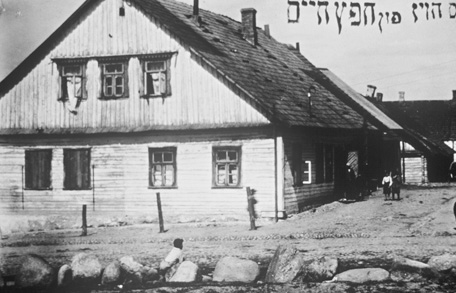
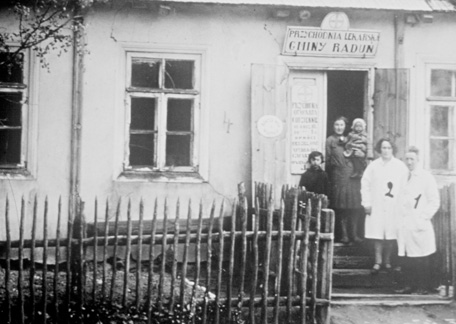
The Radin Ghetto
On 10 May 1942 the Nazis staged a large-scale ac tion, during which thousands of Jews were led out of the ghetto to the ancient Jewish cemetery, burial place of the esteemed religious scholar Hafetz Hayyim, where they were murdered.
There is a List of Martyrs for Radun. It was constructed by the Russians when they took the town from the Nazis at the end of World War II. While it includes names such as SYLETSKI, ABRAMOVICH, MORDUCHOVICH and LIPNITSKI, it does not list any Streletskaja’s or Zemser’s.
DISCLAIMER: THIS IS WORK IN PROGRESS. WE ARE NOT SURE THIS INFORMATION IS ENTIRELY CORRECT, AND WE KNOW IT IS INCOMPLETE. |

